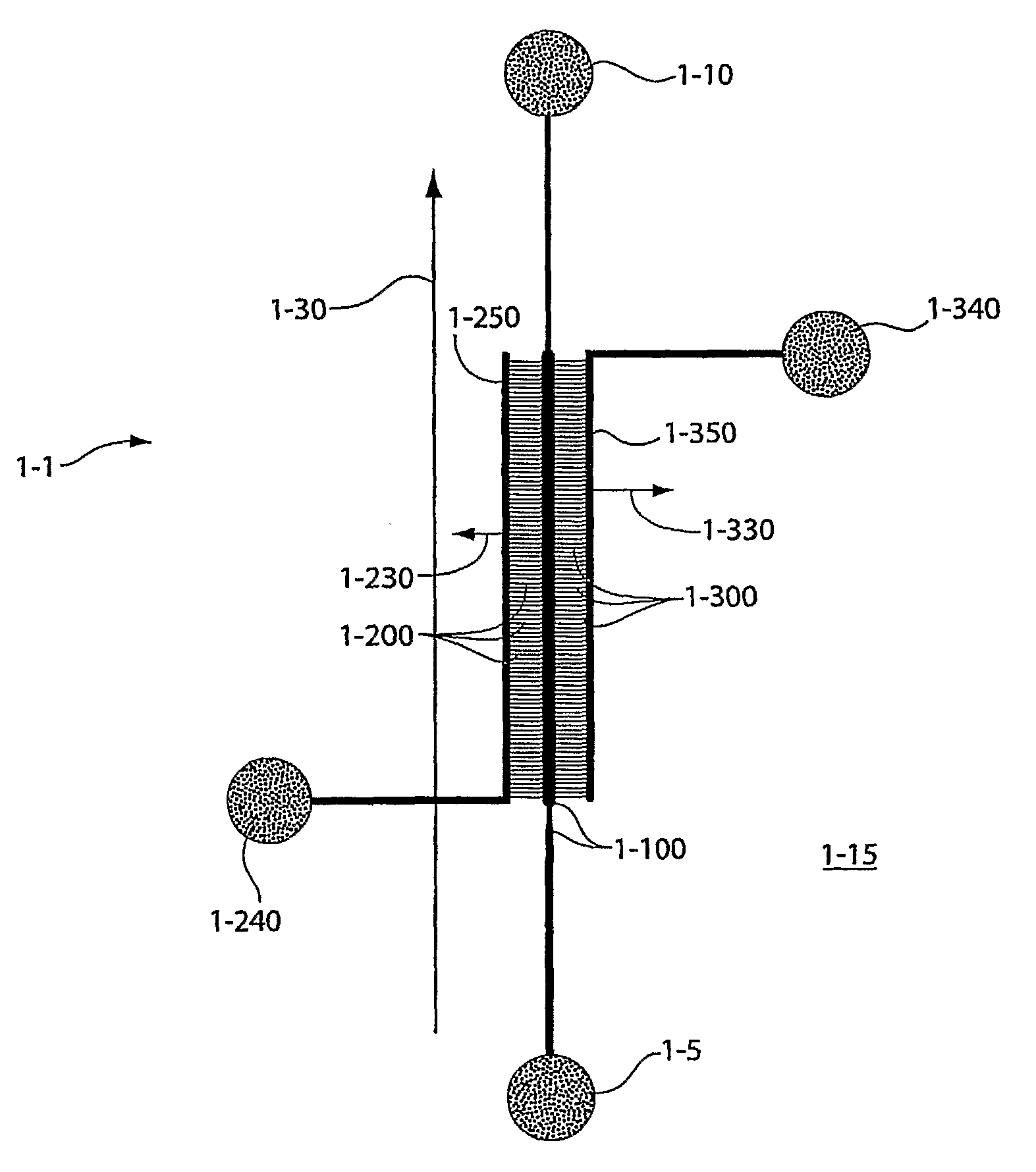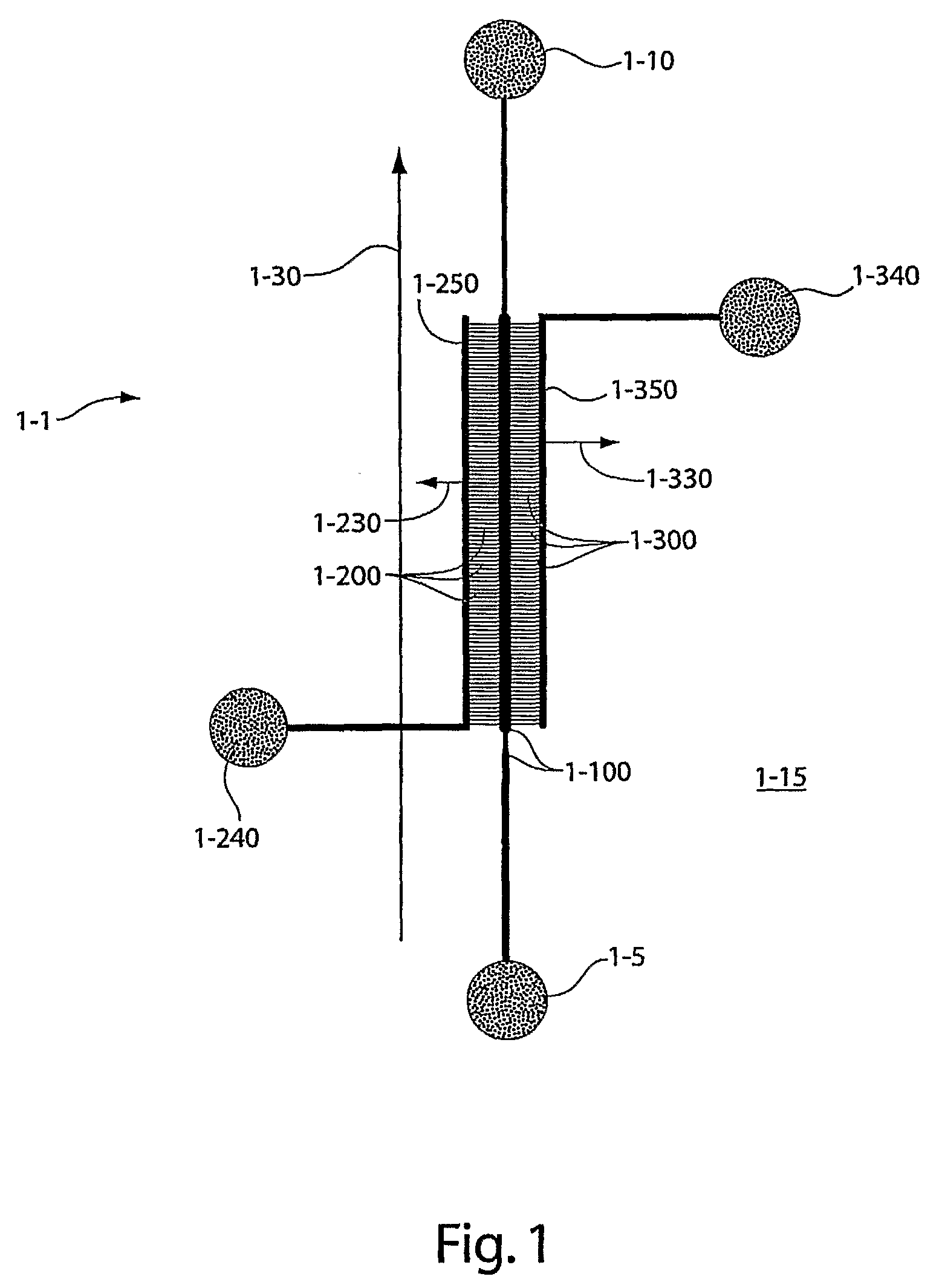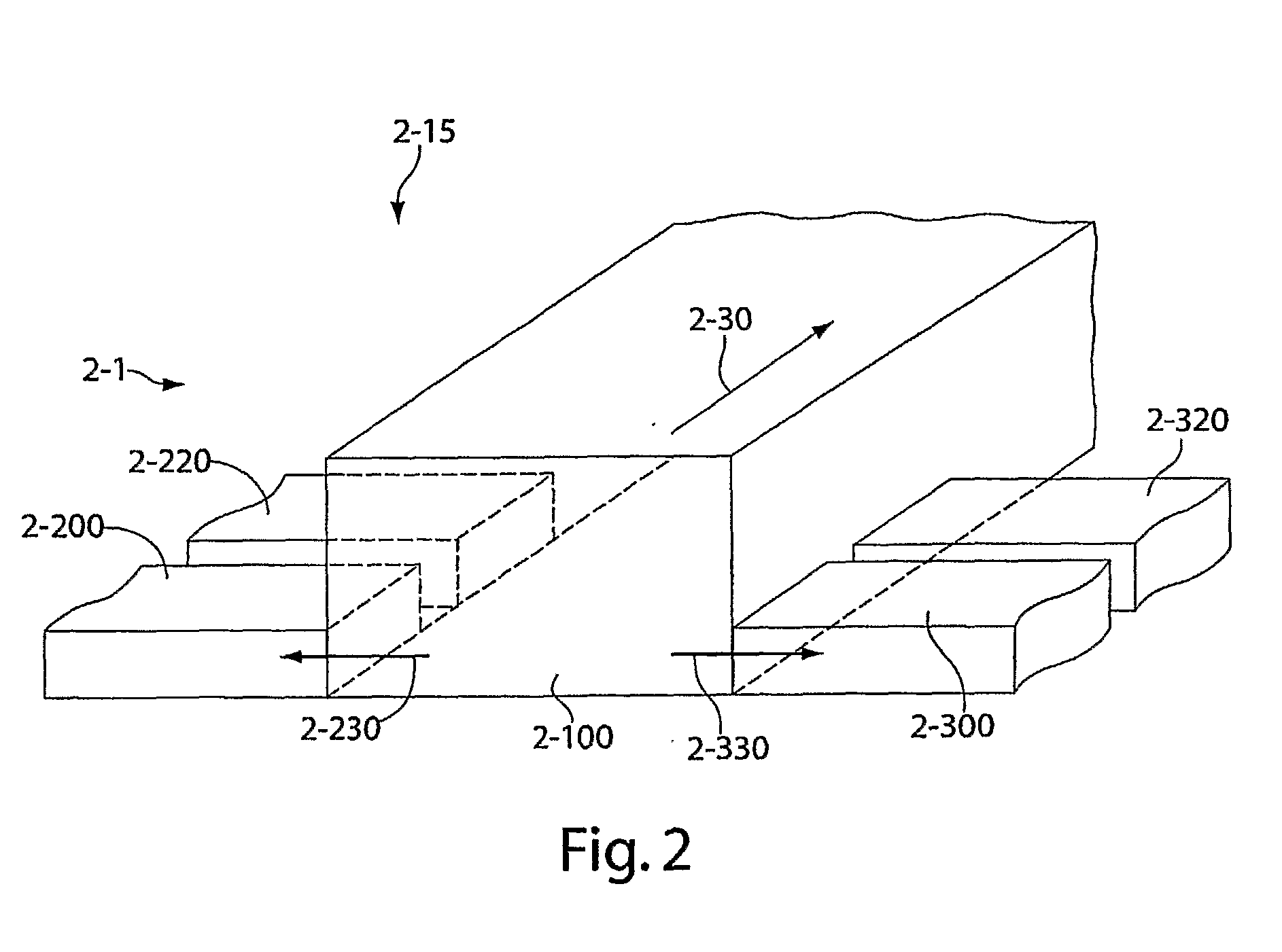Microconcentrator/Microfilter
a technology of microconcentrator and filter, which is applied in the direction of membrane, separation process, multi-stage water/sewage treatment, etc., can solve the problems of limiting the place and time of separation, and large amount of capital equipment,
- Summary
- Abstract
- Description
- Claims
- Application Information
AI Technical Summary
Benefits of technology
Problems solved by technology
Method used
Image
Examples
example 1
[0062]Example 1 demonstrates that a microfluidic filter can be fabricated using a one step soft-lithography method as described in U.S. Pat. No. 6,686,184. A brief description of this method is as follows. A chrome mask including a design of the microfilter channels was fabricated. A two micron high layer of SU-8 was spin coated onto a silicon wafer. The SU-8 was shined with UV light and developed. The wafer was recoated with a 25 micron layer of SU-8 and the channels of the filter were developed. Twenty-five grams of PDMS were poured over the silicon mold and degassed in a vacuum chamber. The inlet and the outlet holes were punched with a specially prepared twenty-gauge needle. The PDMS device was then sealed to a PDMS slab by oxidizing both pieces using an air plasma chamber. The inlet and the outlet holes were connected with PE-20 tubing.
[0063]In one example, a device similar to the one shown in FIG. 1 was fabricated. The device comprised a first channel 1-100, rectangular in cro...
example 2
[0064]Example 2 shows that a suspension of microspheres can be filtered from a fluid using the device of Example 1. A 0.1% w / v suspension of 4 μm fluorescent polystyrene microspheres was introduced into the device via inlet 1-5 and then run at various pressures through the device. Argon from a pressurized gas cylinder was used to apply the driving pressure. FIG. 3 is a close-up (10×) photograph of the device of Example 1, showing entry of the filtrate into secondary channels 3-200 and 3-300. The fluid from the suspension was dyed with 1 mg / mL of fluorescein to improve visibility; the filtrate of the suspension can be seen displacing air 3-260 in the first filtrate collection channel 3-250. In this example, the suspension was driven at a flow rate of 9000 microliters per hour. The microspheres 3-410 can be seen as streaks due to the high flow rate in the first channel 3-100. About 7% of the suspension was extracted as filtrate through the two filtration channels 1-250 and 1-350, and ...
example 3
[0066]The following example demonstrates that porous materials can be formed in the device of Example 1 and that the device comprising the porous materials can be used to filter a sample of whole blood. To form a porous material comprising 1 μm beads, a 0.1% suspension of 1 μm beads was introduced into the device via an inlet to a first main channel. The suspension was flowed through the device using argon from a pressurized gas cylinder. FIG. 5 (63× magnification of the actual device) shows porous layers 5-410, 5-415 and 5-420 being formed in secondary channels 5-200, 5-205, 5-210 at the junction, or interface, of first channel 5-100. The porous layers were formed from random close packing of the spherical beads in different configurations in the channels. For instance, in some cases, the spheres 5-405 packed at the inlet of a secondary channel 5-210. In other cases, the spheres 5-405 comprising porous layer 5-420 packed inside a portion of secondary channel 5-210.
[0067]After the p...
PUM
| Property | Measurement | Unit |
|---|---|---|
| Pore size | aaaaa | aaaaa |
| Flow rate | aaaaa | aaaaa |
| Diameter | aaaaa | aaaaa |
Abstract
Description
Claims
Application Information
 Login to view more
Login to view more - R&D Engineer
- R&D Manager
- IP Professional
- Industry Leading Data Capabilities
- Powerful AI technology
- Patent DNA Extraction
Browse by: Latest US Patents, China's latest patents, Technical Efficacy Thesaurus, Application Domain, Technology Topic.
© 2024 PatSnap. All rights reserved.Legal|Privacy policy|Modern Slavery Act Transparency Statement|Sitemap



